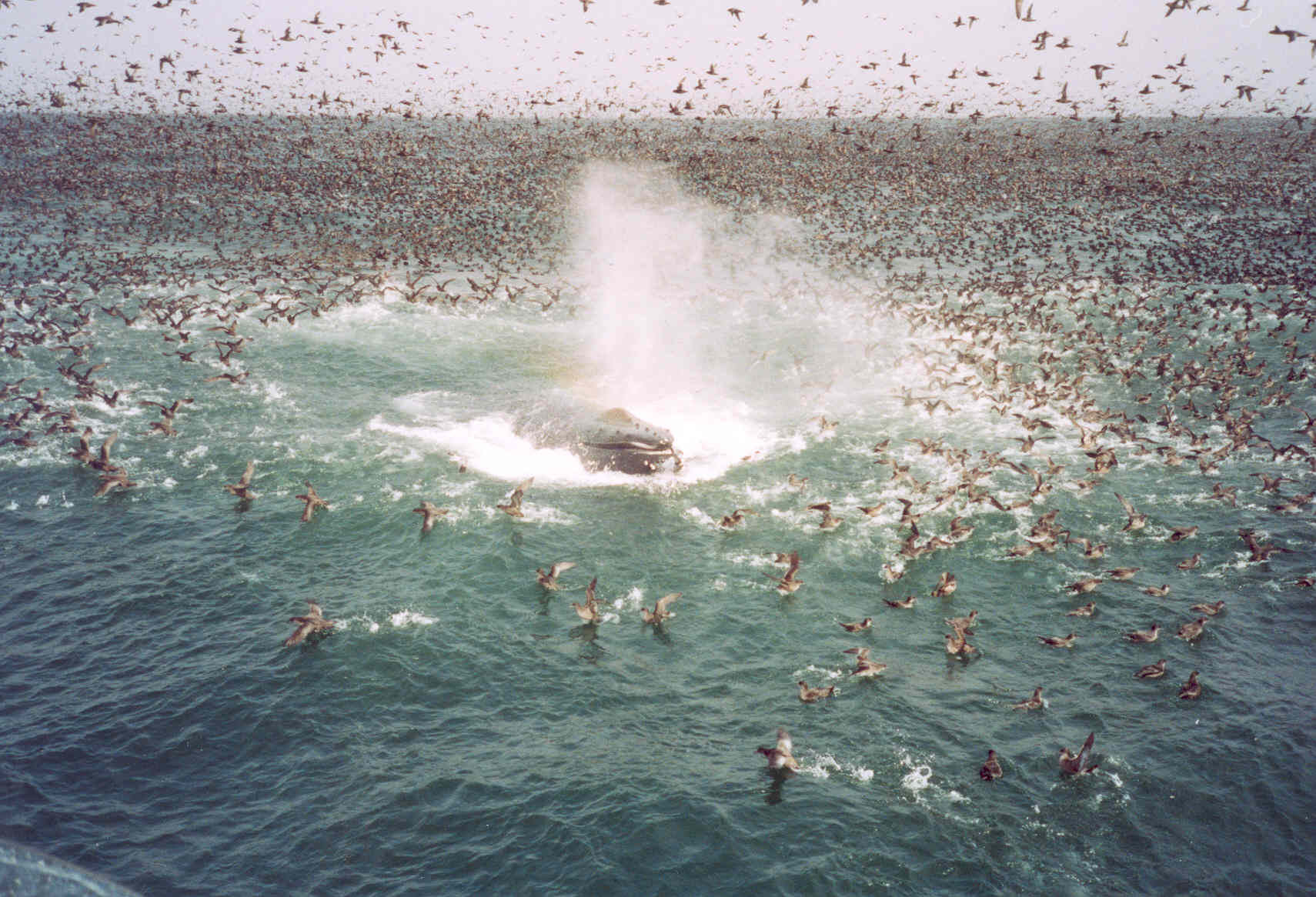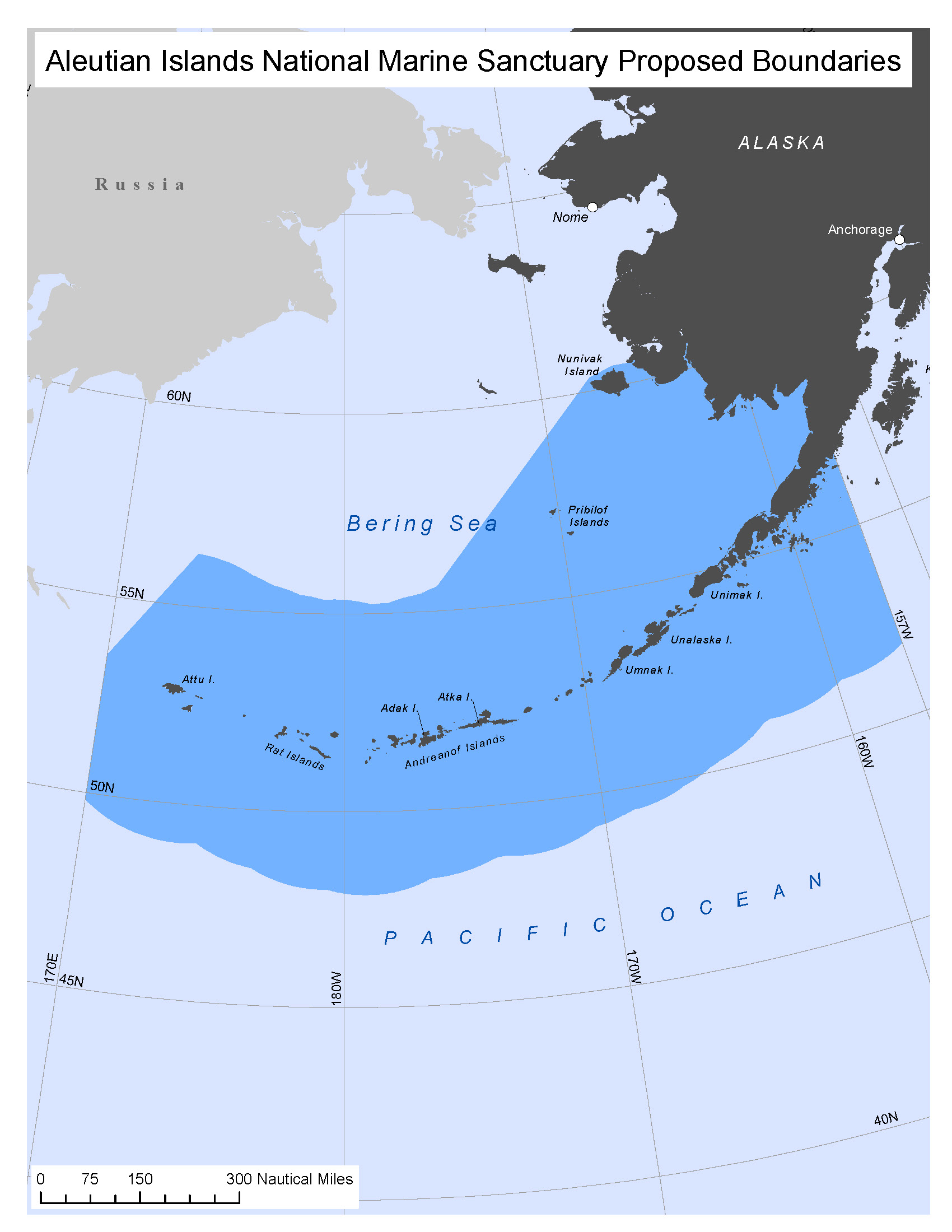By Mark J. Spalding with Catharine Cooper
A version of this blog was originally posted on National Geographic’s Ocean Views micro site
4,405 miles from the deal-making handshakes of Washington D.C. lies a rugged chain of exquisitely beautiful islands begging for Marine Sanctuary inclusion. Extending from the tip of the Alaskan peninsula, the Aleutian Islands are home to one of the richest and most biologically productive marine life ecosystems, and one of the largest population of marine mammals, seabirds, fish and shellfish in the world. The 69 islands (14 large volcanic and 55 smaller) form an 1,100 mile arc toward the Kamchatka Peninsula in Russia, and separate the Bering Sea from the Pacific Ocean.
Here is the home of several endangered species, including the Steller sea lions, sea otters, short-tailed albatross, and the humpback whales. Here are the passes that provide critical travel corridors for most of the world’s gray whales and northern fur seals, which use the passes to access feeding and breeding grounds. Here is the home of some of the most diverse and dense aggregations of cold-water corals known in the world. Here is the ecosystem that has supported the subsistence needs of the coastal Alaska native people for millennia.

Overhead, the screech of a bald eagle. In the waters, the thunderous splash of a humpback whale breaching. In the distance, smoke plumes rise in curls above steaming volcanoes. On the shore, verdant green cliff faces and valleys lie at the foot of snowswept ridges.
At first glance, this wilderness looks pristine, intact, unaffected by the ravages that affect more populated seaboards. But those who live, work, or research in the area have witnessed staggering changes in the last 25 years.
One of most visible shifts in the marine ecosystem has been loss or near extinction of several species, including the Steller sea lions and sea otters. These light blonde to reddish brown sea mammals were at one time visible on nearly every rocky outpost. But their numbers decreased 75% between 1976 and 1990, and decreased by another 40% between 1991 and 2000. Sea otter populations that numbered near 100,000 in 1980 have diminished to less than 6,000.
Also missing from the pristine picture of the Aleutian chain are the king crab and shrimp, the schools of silvery smelt, and the lush undersea kelp forests. Sharks, pollock and urchins now dominate these waters. Called a “regime shift” by George Estes of the U.S. Geological Survey, the balance of prey and predator has been upended.
Although the region is remote and sparsely populated, shipping through the Aleutian Islands is increasing, and the natural resources of the region continue to be heavily exploited for commercial fisheries. Oil spills occur with frightening regularity, often go unreported, and oftentimes cause irreparable damage. The region remains difficult to access, and significant data gaps exist for ocean related research. The need to better understand the marine ecosystem is essential to properly manage and address future risks.
I first became involved with the Alaskan environmental community in 2000. As head of the Alaska Oceans Program, I helped design several campaigns to address the problems affecting the area – such as the need to establish better limits on bottom trawling in the Bering Sea – for the Alaska Conservation Foundation. We helped advocate for ecosystem-based advocacy strategies to improve fisheries management, expanded ocean literacy programs, fostered the creation of the Shipping Safety Partnership, and promoted international and national efforts for sustainable seafood choices. We built the Alaska Oceans Network, which provides shared communications between conservation groups such as Oceana, Ocean Conservancy, Earthjustice, World Wildlife Fund, Alaska Marine Conservation Council, and Trustees for Alaska. And all the while, we searched for ways in which the Aleutian communities’ wish for a sustainable ocean future could be acknowledged and celebrated.
Today, as both a concerned citizen and CEO of The Ocean Foundation (TOF), I join in seeking the nomination of the Aleutian Islands National Marine Sanctuary (AINMS). Put forth by the Public Employees for Environmental Responsibility, and signed by the Center for Biological Diversity, Eyak Preservation Council, The Center for Water Advocacy, the North Gulf Oceanic Society, TOF, and Marine Endeavors, sanctuary status will offer additional levels of protection to the many threats facing the Aleutian waters. All of the waters along the entire Aleutian Islands archipelago – from 3 to 200 miles north and south of the islands – to the Alaska mainland and federal waters off the Pribilof Islands and Bristol Bay, are proposed for inclusion. The sanctuary designation would encompass an offshore area of approximately 554,000 square nautical miles (nm2), which would constitute the nation’s largest marine protected area, and one of the largest in the world.
That the Aleutians are worthy of protection dates back to 1913, when President Taft, by Executive Order, established the “Aleutian Islands Reserve as Preserve for Native Birds, Animals and Fish.” In 1976, UNESCO designated The Aleutian Islands Biosphere Reserve, and the 1980 Alaska National Interest Lands Conservation Act (ANILCA) established the Alaska Maritime National Wildlife Refuge and the 1.3 million acre Aleutian Islands Wilderness.

Even with these designations, the Aleutians need further protection. The main threats to the proposed AINMS are overfishing, oil and gas development, invasive species, and increased shipping. The growing effects of climate change further aggravate these four threats. The waters of the Bering Sea/Aleutian Islands are more acidic than any other marine waters in the world, due to CO2 absorption, and retreating sea ice has changed the structure of the region’s habitat.
The National Marine Sanctuaries Act (NMSA) was enacted in 1972 to protect significant marine habitats and special ocean areas. Sanctuaries are managed for multiple purposes, provided the uses are deemed compatible with resource protection by the Secretary of Commerce, who determines through a public process what activities will be allowed and what regulations will be applied to various uses.
NMSA was reauthorized in 1984 to include qualities of “historical” and “cultural” value to the environmental concerns. This enlarged the sanctuaries primary mission to preserve marine resources beyond the ecological, recreational, educational, research or aesthetic values.
With the increasing threats to the Aleutian waters, the proposed goals of the Aleutian Islands Marine National Marine Sanctuary are:
1. Protect seabird, marine mammal, and fish habitat, and restore populations and marine ecological resilience;
2. Protect and enhance Alaska Native marine subsistence;
3. Protect and enhance coastal small-boat fisheries;
4. Identify, monitor, and protect unique seabed habitats, including cold-water corals;
5. Reduce environmental risks from shipping, including oil and hazardous cargo spills, and whale-ship strikes;
6. Eliminate environmental risks from offshore oil and gas development;
7. Monitor and manage risks of marine invasive species introductions;
8. Reduce and manage marine debris;
9. Enhance marine eco-tourism development; and
10. Enhance scientific understanding of the region.
The establishment of the sanctuary will increase opportunities for research in marine science, education and appreciation of the marine environment, and help generate a clearer understanding of the adverse impacts and threats from current and future uses. Specialized focus on Subarctic and Arctic waters, marine ecology resilience, and recovery from excessive fishery harvests and its effects will generate new information to aid in the development of policies to enhance the economics and long-term viability of the sanctuary. Studies will be expanded to investigate the internal dynamics of the region, such as the role of cold-water corals, the function of commercial species in the marine food web, and the interplay of seabirds and marine mammals.
There are currently fourteen U.S. National Marine Sanctuaries, each one has its own specific guidelines and protection, each one unique to its habitat and environmental concerns. Along with protections, national marine sanctuaries provide economic value far beyond the water, supporting approximate 50,000 jobs in diverse activities ranging from fishing and diving to research and hospitality. Across all sanctuaries, about $4 billion is generated in local and coastal economies.
Nearly all of the Aleutians are protected as part of the Alaska Maritime National Wildlife Refuge and the Aleutian Islands Wilderness, thus National Marine Sanctuary status will bring new oversight to the region, and bring the total number of sanctuaries to fifteen – fifteen spots of remarkable beauty, bearing historical, cultural and economic value. The Aleutian Islands deserve the designation, both for their protection and the value that they will bring to the sanctuary family.
To share the thoughts of Dr. Linwood Pendleton, (then) of NOAA:
“I believe national marine sanctuaries are an essential part of the ocean infrastructure, and on of our best hopes of making sure the ocean economy we have grown to depend on is sustainable and productive for generations to come.”
Whale photo courtesy of NOAA







